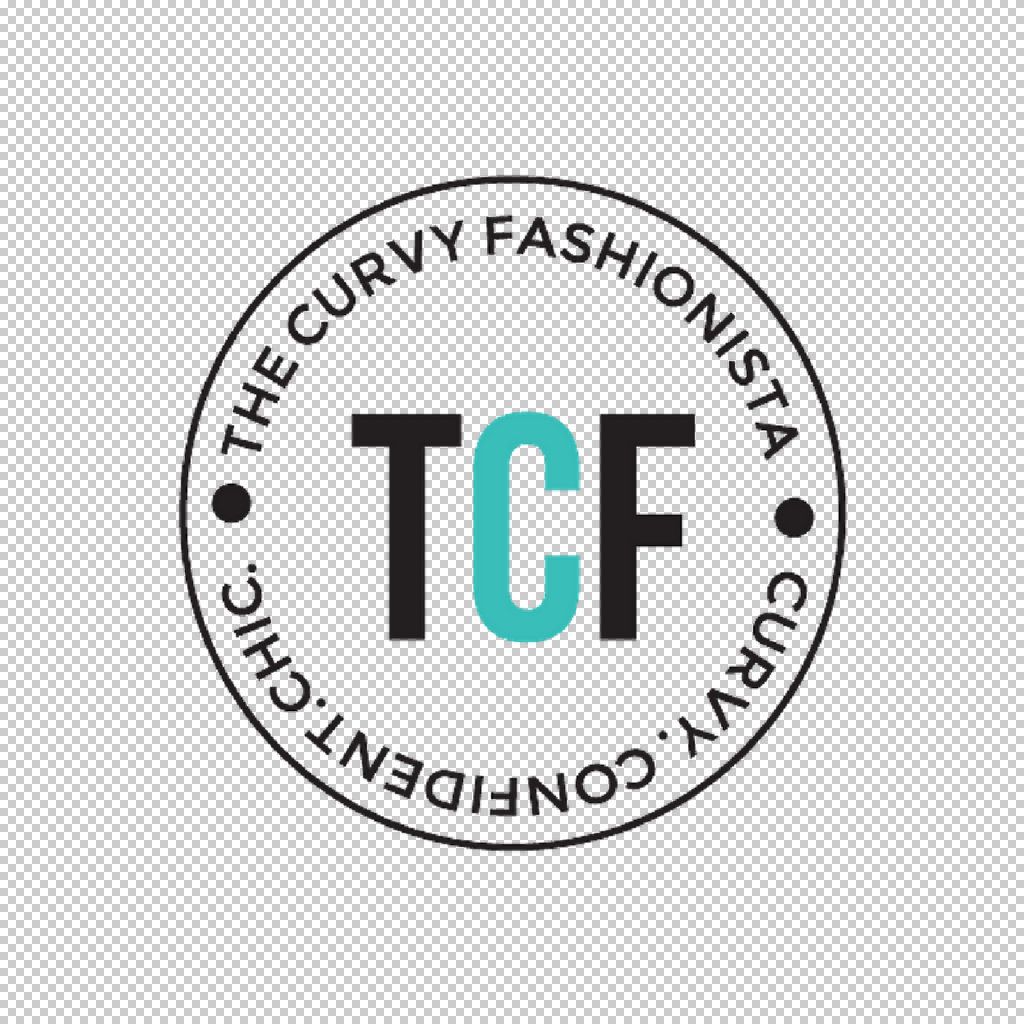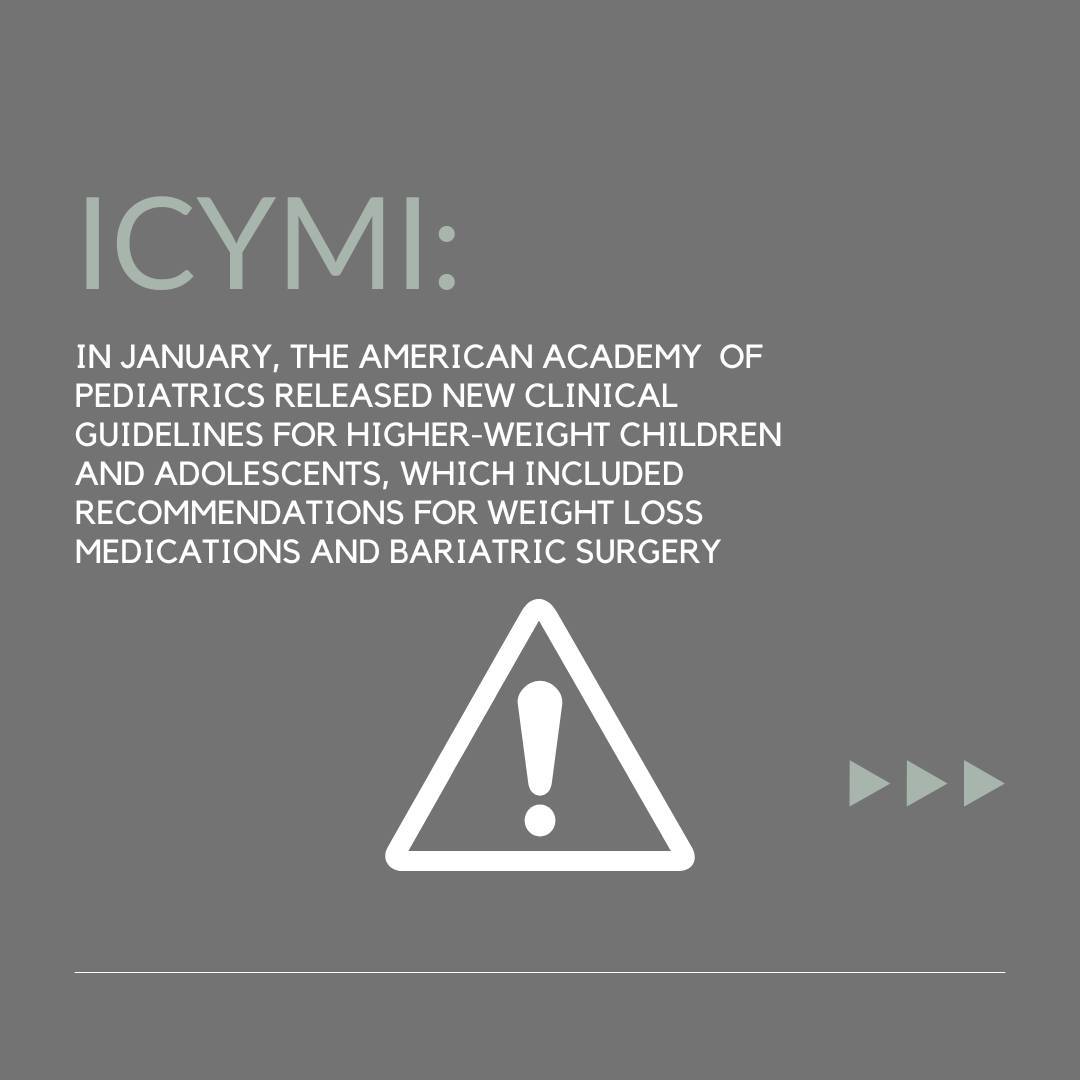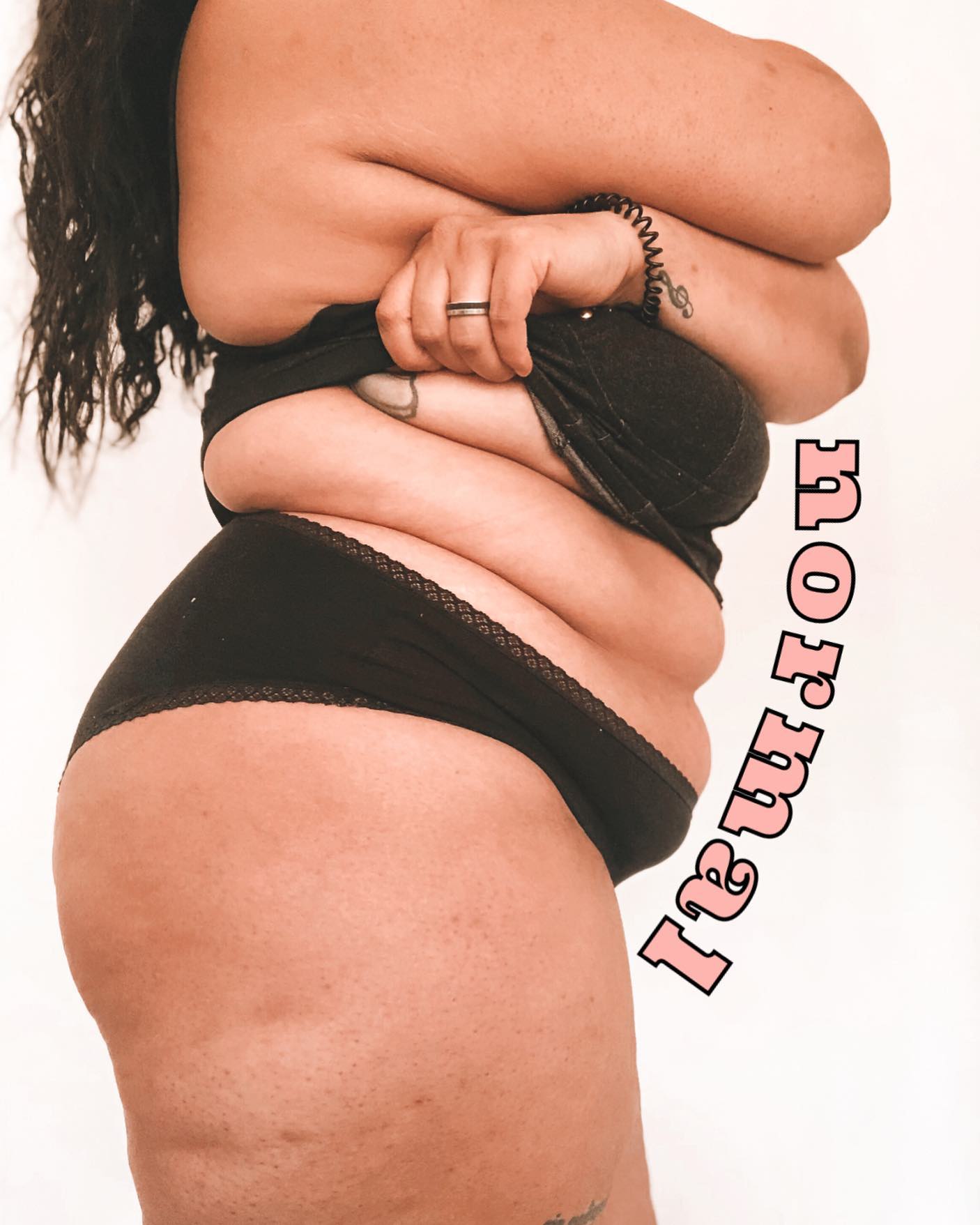Have you heard about the new American Academy of Pediatrics’ (AAP) recommendations for treating “childhood obesity?” If you haven’t, this is probably going to make your head spin. Before we get into the specific guidelines, what they mean, and concerns from medical professionals, I want you to think back to your own childhood.
If you grew up in a larger body, focus on how doctors, family, your parents, and your peers treated you and focused on the size of your body.
Did your doctor ever insist on testing your glucose levels at every visit just because of your weight with no other indications that you could be diabetic? Did your parents force you into a weight loss focused program like Weight Watchers or LA Weightloss?
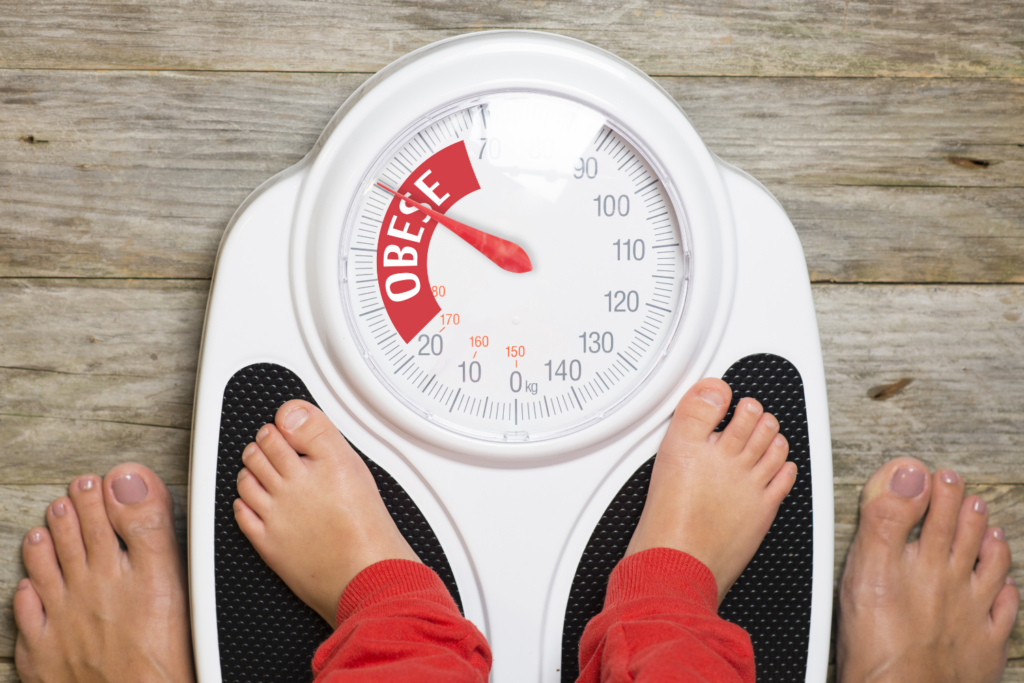
Were you ever treated differently by your peers because you didn’t have the same clothes they did? Were you made to wear a uniform or costume that was completely different from everyone else because that was the only option available in your size?
“Obesity” as a Disease
If you do some research on how “obesity” was classified as a disease, it may surprise you. About 10 years ago, the American Medical Association (AMA) asked their Committee on Science and Public Health to make a determination on whether to classify obesity as a disease or to just keep considering it a risk factor for chronic illnesses.
The committee produced a 5 page opinion suggesting obesity should NOT be classified as a disease for multiple reasons. The reasons being: obesity doesn’t fit the definition of a medical disease, if you consider the human history of adapting to store calories during periods of famine- this actually indicates larger bodies are more efficient, and they worried that medicalizing obesity could hurt patients by creating more stigma and resulting in ultimately useless “treatments.”

At the AMA’s annual meeting in the summer of 2013, Resolution 420: “That our American Medical Association recognize obesity as a disease state with multiple pathophysiological aspects requiring a range of interventions to advance obesity treatment and prevention” passed overwhelmingly by vote, completely disregarding their own committee’s recommendations.
Ok, now that we are in the right frame of mind to discuss these new AAP guidelines, let’s get into it… and brace yourself.
What Do the New Guidelines Say?
One of the main recommendations in the new guidelines for the treatment of “childhood obesity” is intensive behavior and lifestyle therapy. This includes things like nutritional counseling, physical activity, and “behavioral changes.” Ideally, this would entail 26 hours of in-person treatment over the course of months. An issue with this recommendation is that it will be a while until the therapy is available, which leads us into the more concerning parts of these guidelines because those are more readily available.
The AAP is now recommending weight loss medications to children 12 years and older who are diagnosed as “obese.” Children 13 years and older with “severe obesity” are recommended to have bariatric surgery. This would include those with body weight in the 99th percentile for age and sex.

Why are These New Guidelines a Problem?
If there’s one thing we already know about these trending weight loss medications that will now be prescribed to children, when people go off of these medications, most gain the weight back. This means that once a child is put on these medications, they will need to be taking them for the rest of their lives.
People who get bariatric surgery are at risk for disordered eating post-surgery, which can be very dangerous because of the way the body needs nutrients post-op. They are also at risk for problems with alcohol as they get older postoperatively.
Medications and surgery are the parts of the guidelines most discussed by medical professionals online because they will likely be the options chosen by medical professionals since the behavioral and lifestyle therapy isn’t readily available at this time.

We asked @paulina.the.therapist (MHC-LP) on TikTok for her perspective on these guidelines as a mental health counselor. She states, “Fat people are not a problem to be solved. The negative consequences of weight stigma are well documented yet fat people are treated as subhuman on both systemic and interpersonal levels.
“The AAP fails to mention nor caution pediatricians about eating disorders or disordered eating. Instead, they recommend actions that are known and documented risk factors for eating disorders with completely inadequate mention of how weight stigma and discussion of weight can increase the risk of developing an eating disorder. Our children are among our most vulnerable and impressionable populations. It has been shown repeatedly that a focus on weight does not lead to positive health outcomes. Quite the opposite, and yet, anti-fat bias runs so deep throughout the medical industrial complex that such dangerous recommendations are being made regardless. It was never about health.”

@nursingtheoryprof (PhD RN) on TikTok states, “As a self-management researcher, I’m also troubled by the way these guidelines do not meaningfully address weight stigma, including the way that the approach recommended here could make children feel stigmatized by their providers. This could be de-motivating over the course of a child’s life, especially if most visits are focused on weight. If children feel that they are reduced to their weight status in the eyes of their provider, and then that their home life is constantly focused on weight, they are likely to be discouraged and resist health behaviors as they develop through adolescence.”
“The thing I find most important in these guidelines is the way they only give lip service to the social determinants of health. All of the behavior change pieces assume all families have access to the same choices in food, safe spaces for physical activity, ability to enroll in extracurricular activities, etc. In fact, the families with the least ability to make the healthy choices asked of them also are the least likely to have access to the medications and surgery recommended.”
What is Being Done to Combat These Recommendations?
Weight Inclusive Nutrition and Dietetics (WIND) is gathering a team of health care professionals and advocates in the weight inclusive space, including Patrilie Hernandez of Embody Lib, Dawn Lundin from Restore Dietetics, Ragen Chastain, and others to respond to these new guidelines.
WIND’s focus is considering how these guidelines with affect the most marginalized communities, the future implications and impact on families, and how this may shape policies for providers and insurance plans.
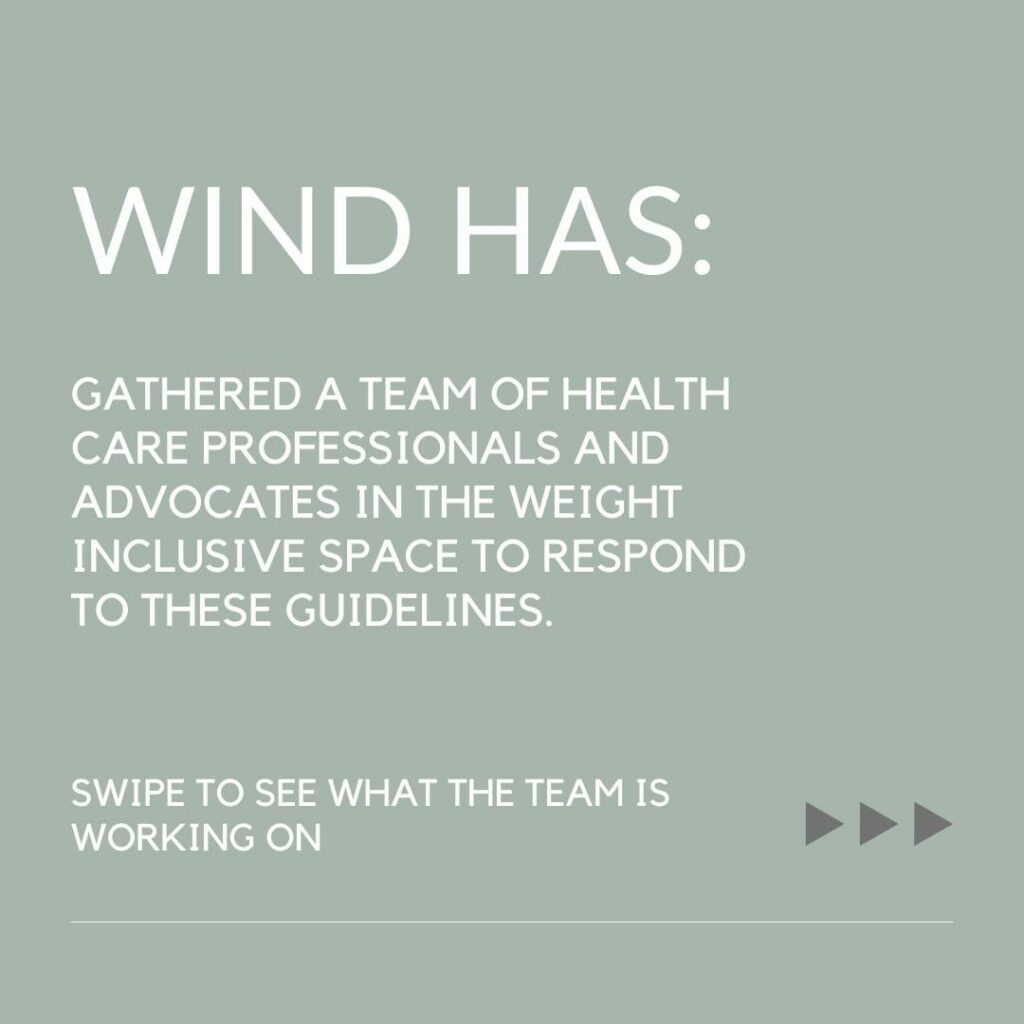
WIND states, “The Clinical Practice Guidelines have the potential to harm children and perpetuate weight stigma even more. This workgroup is dedicated to analyzing the guidelines and advocating for evidence-based and weight-inclusive approaches to child health. In the weeks and months following the release of the guidelines, the group has met regularly and is working on:
- An in-depth review of the more than 800 references cited, including analyzing a handful of studies to identify design flaws and faulty conclusions
- A resource that serves as a one-stop shop for articles, podcasts, and media responses to the Clinical Practice Guidelines so far
- A sign-on letter outlining the potentially harmful consequences for children if the guidelines are implemented in their current form. The letter also provides a call to action for anyone who is looking to engage in advocacy around this issue.”
All of this will be unveiled to the public at a webinar hosted by WIND in mid-summer 2023.
If you’re concerned about these new guidelines in relation your own child, we recommend asking your pediatrician to not talk to your child about their weight.
You always have the option to tell your child’s doctor not to comment on your child’s body or discuss BMI in front of them. If the provider doesn’t agree to do so, it’s worth looking for a new doctor.

